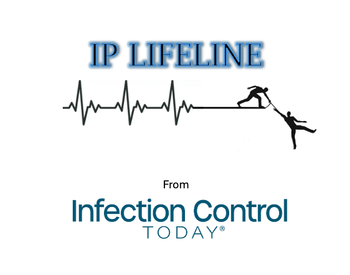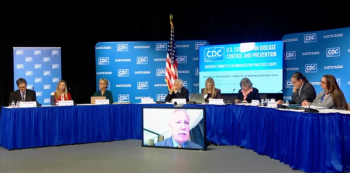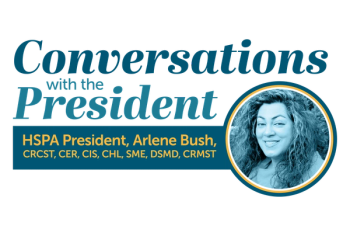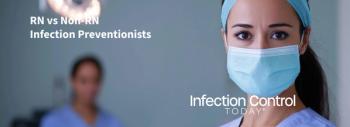
- Infection Control Today, July/August 2024 (Vol 28 No.4)
- Volume 28
- Issue 4
Veterinary Infection Prevention: A Discussion With Leslie Kollmann, BS, CVT, CIC

Leslie Kollmann, BS, CVT, CIC, speaks with Infection Control Today about veterinary infection prevention at the APIC Conference and Exposition held in San Antonio, Texas, from June 3 to 5, 2024.
Infection prevention is usually thought of in health care facilities. However, it is also found in stores, factories, and anywhere pathogens can be. However, one place that often gets overlooked is the veterinarian's office. In comes the veterinary infection preventionist.
An oral abstract presented by Leslie Kollmann, BS, AAS, CVT, CIC, at the (Association for Professionals in Infection Control and Epidemiology) APIC 2024 Annual Conference & Exposition held from June 3 to 5 in San Antonio, Texas, examined a pilot program called the Veterinary Occupational Health and Infection Control Assessment Program (VOHICA).
She is from the Minnesota Department of Health. She is a certified veterinary technician who works in the zoonotic diseases unit and is a veterinary infection preventionist.
ICT: Please tell ICT’s audience about being a vet tech infection preventionist.
Leslie Kollmann, BS, AAS, CVT, CIC:I've been a veterinary infection preventionist for about 15 years. I started out working at the University of Minnesota Veterinary Medical Center, starting their program there, and then in 2016, I moved on to the Minnesota Department of Health to do further outreach within the state.
ICT: Please explain the key takeaways.
LK: The key takeaways from my abstract [are] that there's a need for veterinary infection prevention training nationwide, not just within the state of Minnesota. So, my project that focused on the state of Minnesota was a starting point for this work. The tools and resources are needed, and they can be created specifically for animal care facilities of all kinds, veterinary clinics, Wildlife [rehabilitation], zoos, shelters, sanctuaries, anywhere there is an animal we should have veterinary infection prevention trained in that profession, so just bringing that to highlight to others that this is needed. It can be done. It's successful. And then we need to bring this nationwide for other states.
ICT: What are the requirements and certifications for veterinary infection preventionists?
LK: There are no requirements right now. So that's a big problem. There are really no training programs for veterinary infection prevention. When I was trained as an infection preventionist in 2008, I was trained by an IP from the human healthcare field. You know, fast forward to now. There's a little bit of training here and there that's recently been put out, which is good. It goes over the basics of infection prevention. But there's no certification, there's no official program, there's no test, nothing. So it is pretty much on-the-job, trained with whatever guidance and resources are out there available.
ICT: What is your favorite part about being here at the APIC conference?
LK: My favorite part is networking with other people. There are a couple of other veterinary infection preventionists here, so it's nice to connect with them because I've only [connected with them] through emails or Zoom. It was nice to finally connect with them, share common goals and interests, and meet people from all over the place.
ICT: Do you have anything else you would like to add?
LK: We're moving forward with veterinary infection prevention. We are, as of recently, working with APIC to form a veterinary infection prevention council, which will be released hopefully within the next month. I've put together a network of veterinary infection preventionists who have been working in the field since January, and we have about 25 people on this networking team who have come along with the ride to start this council with APIC. So, I'm excited to have APIC as a partner and that they are interested in growing our field.
Articles in this issue
over 1 year ago
Dining Recommendations for Long-Term Care Facilitiesover 1 year ago
Bug of the Month: I Like Animals and a Few Peopleover 1 year ago
Infection Prevention Implication for Organ Donation Programover 1 year ago
APIC Launches PolicyPro for Infection Control and Preventionover 1 year ago
Standardizing Cleaning Protocols Across the Care ContinuumNewsletter
Stay prepared and protected with Infection Control Today's newsletter, delivering essential updates, best practices, and expert insights for infection preventionists.






